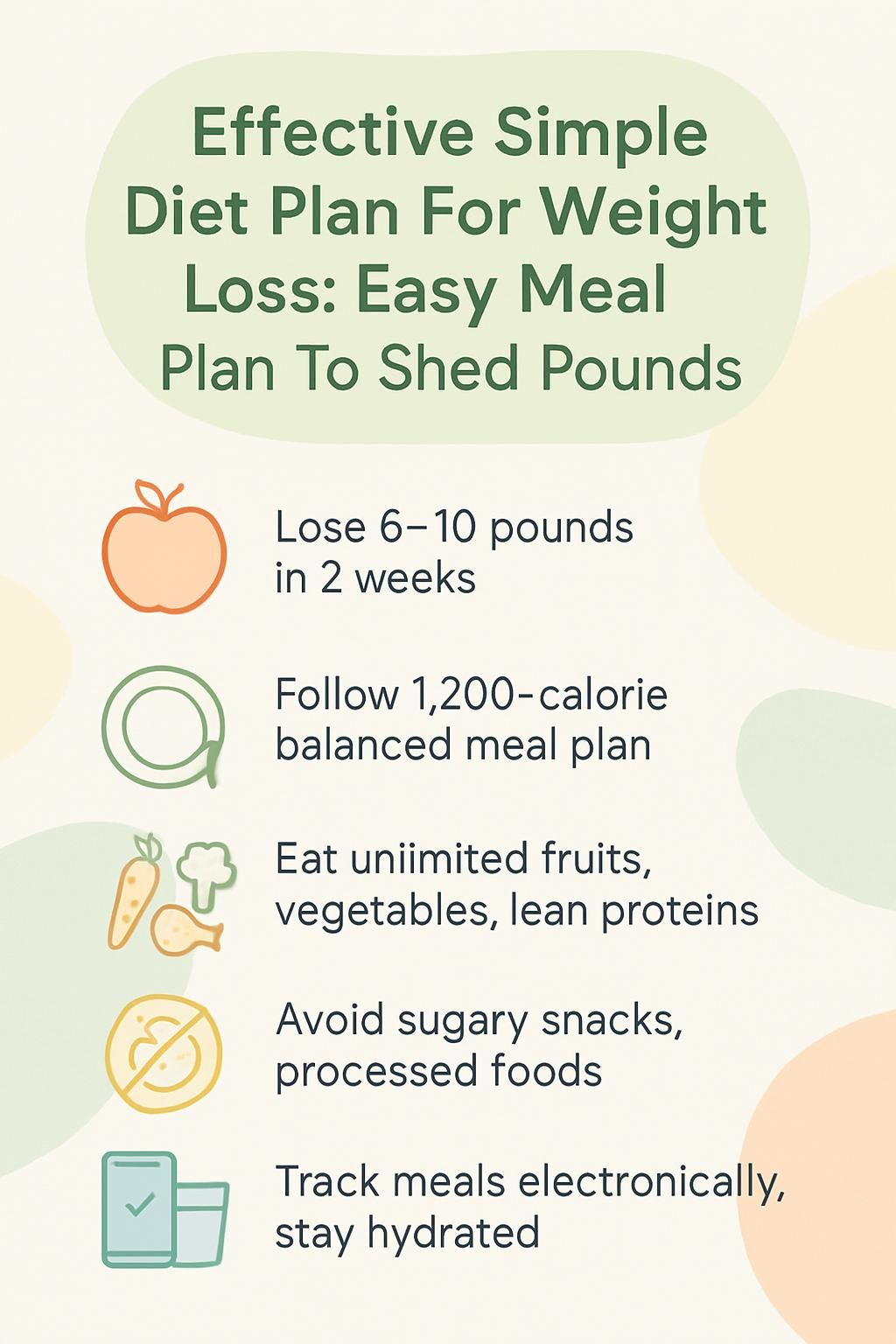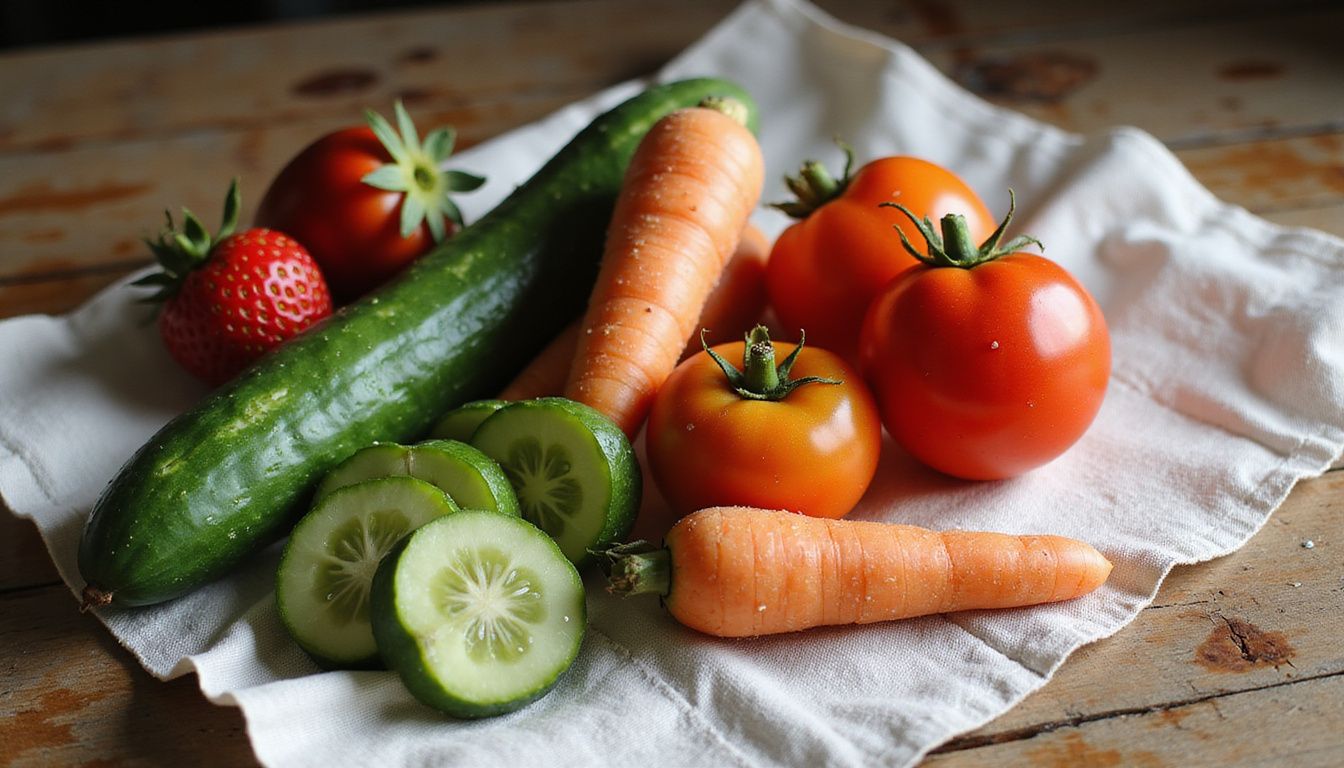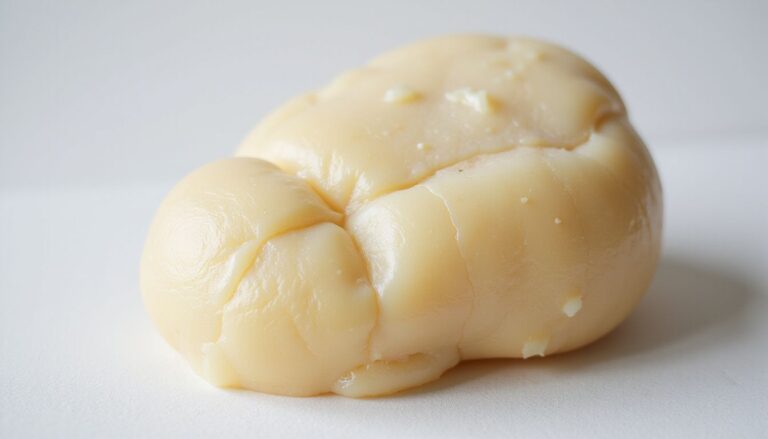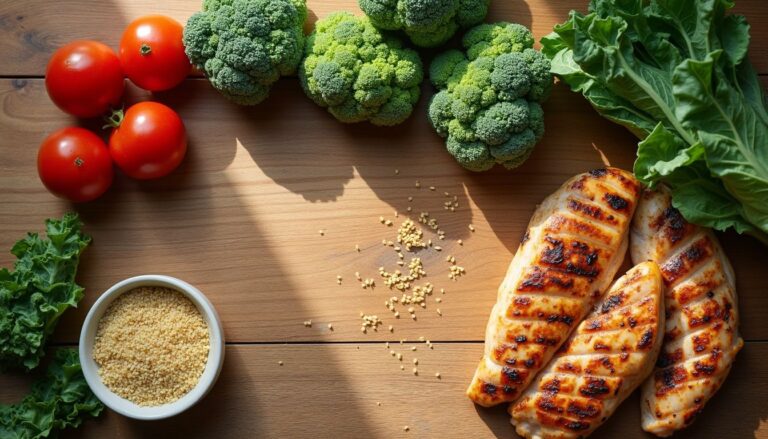Effective Simple Diet Plan For Weight Loss: Easy Meal Plan To Shed Pounds
Our Nutrition Assistant AI Suite will transform your body. You will lose fat, get toned, and build muscle. Gain confidence and optimal health.
If losing weight has felt confusing or exhausting, you are in good company. A simple meal plan can cut through noise, support healthy eating, and help you build habits that last. You will find clear steps, smart calorie tips, and easy food swaps that make weight-loss progress feel doable.
This guide gives you a plain eating plan, practical prep ideas, and sample menus. Learn how balanced plates, portion control, and daily activity work together. Simple recipes can fit your routine and still help you reach a healthy weight.
Key Takeaways
- The Mayo Clinic Diet’s LOSE IT! phase reports an average loss of 6 to 10 pounds in two weeks with structured habits and about 1,200 calories for many adults.
- Filling your plate with fruits, vegetables, lean proteins, and whole grains lowers calories while supporting muscle and digestion.
- Simple rules improve follow-through. Home-cooked meals and steady routines beat rigid, rapid plans for long-term results.
- Limiting sugary snacks, processed foods, and refined grains may lower risks linked to diabetes, heart disease, and poor appetite control.
- Tracking meals with an app can improve awareness and choices. Staying hydrated may reduce snack cravings and improve satisfaction during the day.[1]

Basics of a Simple Diet Plan for Weight Loss

A simple diet plan focuses on balance, not perfection. You will eat real food, choose lower calorie options, and keep an eye on portions. That steady approach helps you lose weight without constant stress.
Why is calorie control important for weight loss?
Calories are units of energy. Your body uses them for movement, thinking, and daily tasks. To lose weight, you need a calorie deficit, which means eating fewer calories than you burn.
When that deficit is consistent, your body uses stored fat for fuel. Over time, this leads to fat loss. Some people find 1,200 calories per day too low, especially if they are active or have certain health conditions, according to registered dietitians. Adjust as needed with your healthcare provider.
The Mayo Clinic Diet notes that during the LOSE IT! phase, many people lose 6 to 10 pounds in two weeks with smart calorie control and lifestyle changes. A careful balance in your eating plan supports steady progress.
Tracking meals with a simple app can make this easier.[1]
What are the essentials of balanced nutrition?
Build meals around five parts: lean protein, whole grains, fruits, vegetables, and healthy fats. Fiber, found in foods like whole wheat bread, oats, or quinoa, helps digestion and fullness.
The Mayo Clinic Diet encourages unlimited vegetables and fruits. They deliver vitamins, minerals, and dietary fiber with fewer calories. Lean proteins such as skinless chicken, fish like tuna, eggs, beans, and nonfat yogurt support muscle while keeping saturated fat lower.
Healthy fats from nuts, olives, olive oil, and avocado aid heart health. Low-fat or fat-free dairy offers protein and calcium with fewer calories. Aim for colorful vegetables. For example, add red bell peppers to salads or roast carrots with thyme.
Hummus with cucumber slices makes a quick, satisfying snack. These habits can reduce the risk of obesity and high blood pressure while supporting long-term weight management.
Advantages of a Simple Diet Plan for Shedding Pounds
Simple beats complex. Clear rules and repeatable meals help you stay consistent, which is the real driver of progress.
How does simplicity help maintain diet plans?
Simplicity removes guesswork. Plans like the Mayo Clinic Diet focus on habits, not strict math. You will eat more produce, limit distracted eating, and aim for at least 30 minutes of movement daily. That is easier to follow than a long list of rules.
Meal planning reduces weekday stress and saves money. Cooking at home gives you control over ingredients. Using leftovers for next-day meals keeps prep short and choices simple.
I once tried logging every bite. It felt tiring after two days. Switching to a short list of go-to meals helped me stick with the plan and see steady changes in energy and how clothes fit.
What are the benefits of sustainable weight loss?
Slow and steady is more likely to last. The LIVE IT! phase of the Mayo Clinic Diet targets about 1 to 2 pounds per week, a pace supported by clinicians. This helps protect muscle, reduce nutrition gaps, and avoid rebound weight gain.
Losing excess body fat can reduce risks tied to diabetes, high blood pressure, sleep apnea, and cardiovascular disease. Many people sleep better and feel calmer as routines settle in. As weight drops, daily energy often rises.
How can a simple diet improve health and energy?
Choosing nutrient-dense foods, which means foods that pack a lot of nutrition per calorie, boosts energy and health. Unlimited vegetables and fruits build volume on your plate without a calorie spike.
Swap refined grains for whole grains like brown rice and whole grain bread to support stable blood sugar. Include lean proteins like Greek yogurt or skinless chicken for long-lasting energy.
Allowing a small dessert, about 75 calories, keeps the plan flexible. When I filled half my plate with vegetables and chose whole-wheat toast at breakfast, my workouts felt stronger and afternoon slumps faded.
Essential Components of a Simple Diet Plan
A simple plan uses balanced plates, portion awareness, and routine. The goal is to control your calorie intake without feeling deprived.
What role do lean proteins play in weight loss?
Lean proteins keep you full with fewer calories and help protect muscle during a calorie deficit. Good options include chicken breast, turkey, shrimp, eggs, white fish, tofu, veggie burgers, Greek yogurt, part-skim mozzarella, and 2 percent cottage cheese.
Typical servings are about 3 to 4 ounces at lunch or dinner. Many people enjoy one or two hard-boiled eggs at breakfast or as a snack.
Pair protein with fiber-rich choices like spinach, beans, or sweet potato to control hunger longer. Protein has a higher thermic effect, which means your body uses more energy to digest it compared with carbs or fat.
How do whole grains and fiber benefit weight loss?
Whole grains such as bran flakes, oatmeal, quinoa, brown rice, Cheerios, couscous, and whole wheat pita contain more fiber than refined grains. Fiber slows digestion, supports gut health, and curbs snack urges.
Adding a cup of steamed broccoli or spinach at dinner raises fiber further. Try oats at breakfast or brown rice at dinner for steady energy. Swapping white bread for whole grain toast helped me stay satisfied until lunch without reaching for sweets.
Why are healthy fats important in a diet plan?
Healthy fats help absorb vitamins A, D, E, and K, cushion organs, and support skin health. Olive oil, nuts, seeds, and avocado are solid picks. Keep portions modest. For example, use 1 to 1.5 teaspoons of olive oil for cooking or dressing.
Almonds add crunch and unsaturated fat. Two tablespoons of nut butter on a waffle or toast make a filling breakfast. Fatty fish like salmon supply omega-3 fats that help heart health.
Part-skim cheese keeps flavor while limiting calories. A small piece of chocolate or a low-calorie ice cream bar can fit if you plan for it.
How should fruits and vegetables be included?
Aim for at least two fruit servings per day. Choices include bananas, kiwis, apples, berries, grapes, clementines, pears, grapefruit, or oranges. Fill half your plate with vegetables at lunch and dinner.
Try steamed spinach, broccoli, roasted peppers, and tomatoes. Keep raw veggies on hand for snacks, such as baby carrots or cucumber sticks. The Mayo Clinic Diet allows unlimited vegetables and fruits, so take advantage of that freedom.
Veggie niçoise pitas, vegetable soup, and salads with onion and tomato are easy wins. Salsa makes a tasty dip for cucumber with very few calories.
One-Week Simple Meal Plan for Effective Weight Loss
Use this one-week plan as a roadmap. Adjust portions for your size and activity level, and talk with your healthcare provider if you have medical needs.
What meals are recommended for Day 1 of weight loss?
Breakfast: 3/4 cup bran flakes, one banana, and one cup fat-free milk. The fiber helps fullness without a heavy calorie load.
Lunch: One mini whole wheat pita filled with 3 ounces turkey breast, roasted pepper, lettuce, mustard, and one teaspoon mayo. Add one stick of part-skim mozzarella and two kiwis. Veggie niçoise pitas are another option at about 290 calories per serving.
Dinner: Four ounces of white fish like flounder, one cup couscous, and one cup steamed broccoli. Season with garlic and black pepper. If you want dessert, choose a single-serve ice cream to stay within your plan.
What meals are recommended for Day 2 of weight loss?
Breakfast: Smoothie with one cup frozen berries, half a banana, and 8 ounces low-fat or fat-free milk. Add one or two hard-boiled eggs for protein.
Lunch: One cup vegetable soup and a veggie burger on whole grain toast or an English muffin. Add one cup grapes for a sweet finish.
Dinner: Barbecue cutlets with a light citrus slaw at about 265 calories per serving. Or bake a potato and top with salsa and Greek yogurt. Sauté spinach with a teaspoon of olive oil, garlic, and tomatoes for a quick side.
What meals are recommended for Day 3 of weight loss?
Breakfast: Half a cup quick oats with low-fat or unsweetened soy milk. Add half a sliced apple, one teaspoon honey, and cinnamon.
Lunch: Chicken salad with 4 ounces shredded skinless chicken, red grapes, almonds, and celery. Mix with a tablespoon each of mayo and Greek yogurt. Serve on lettuce with multigrain toast.
Dinner: Four ounces steamed shrimp, a baked potato topped with salsa and Greek yogurt, and up to three cups steamed spinach. Finish with an ounce of chocolate or a 100 to 150 calorie ice cream bar.
What meals are recommended for Day 4 of weight loss?
Breakfast: One cup Greek yogurt with one cup mixed berries.
Lunch: Mini whole wheat pita with 3 ounces roast beef, one teaspoon horseradish, mustard, tomato, and lettuce. Add tomato soup, plus two cups raw veggies and a quarter-cup hummus.
Dinner: Four ounces poached salmon over a light coleslaw mix with sliced scallions. Dress with rice vinegar and olive oil. Add one cup cooked whole grains like quinoa.
What meals are recommended for Day 5 of weight loss?
Breakfast: One cup Cheerios with half a cup berries and one tablespoon almonds. Add 6 ounces plain Greek yogurt.
Lunch: Mushroom quesadilla on a corn tortilla. Serve with cucumber spears and either half a cup cottage cheese or Greek yogurt. Two clementines make a simple dessert.
Dinner: Balsamic-glazed pork tenderloin, about 370 calories per serving, with roasted butternut squash. This combination adds fiber and vitamins A and C.
What meals are recommended for Day 6 of weight loss?
Breakfast: Whole grain waffle with two tablespoons nut butter and a small sliced banana. Sprinkle cinnamon and nutmeg. Add 8 ounces fat-free milk.
Lunch: Tuna salad made with low-fat mayo and nonfat yogurt. Add ten baby carrots and two-thirds cup Greek yogurt. Enjoy a small pear.
Dinner: Spicy sausage jambalaya with three cups sautéed spinach in one tablespoon olive oil. Balanced plates like these help you stay full through the evening.
What meals are recommended for Day 7 of weight loss?
Breakfast: Half an English muffin with one ounce reduced-fat cheese, sliced tomato, and a poached egg. Add one cup steamed spinach and a grapefruit.
Lunch: Black bean salad with half a cup beans, orange segments, chopped bell peppers, red onion, scallions, and greens dressed with one teaspoon vinegar. Serve with one corn tortilla and a piece of fruit.
Swapping standard toast for an English muffin gave me steady energy through the morning while keeping me on track over several weeks.
Tips to Adhere to Your Weight Loss Diet Plan
Small systems beat willpower. A little planning makes the healthy choice the easy choice.
How can weekly meal prepping help with diet adherence?
Meal prep turns your plan into ready-to-eat options. Preparing breakfasts, lunches, and snacks for the week controls portions and helps many people hit about 1,200 daily calories if that fits their needs.
Cook bulk grains, chop produce, and portion proteins. Home-cooked meals help you avoid added sugars and unhealthy oils common in takeout. Leftovers from dinner can become an easy lunch the next day.
Why is staying hydrated important during weight loss?
Water helps you feel satisfied and supports digestion. Many people confuse thirst with hunger. Choosing water or low-calorie drinks supports calorie goals and saves room for food that nourishes you.
High-water foods like soups, watermelon, and cucumbers also help. If you increase fiber, raise fluids to keep digestion comfortable. A glass of water at your desk can reduce snack urges and improve focus.
What healthy snacks can help manage cravings?
Plan snacks that pair protein or fiber with flavor:
- Single-serve ice cream or a 100 to 150 calorie bar
- One ounce dark chocolate
- Fresh fruit like grapes, kiwis, pears, or clementines
- Raw veggies such as baby carrots, cucumber spears, or bell peppers
- Part-skim string cheese or a quarter-cup hummus
- Two-thirds cup Greek yogurt or half a cup cottage cheese
Whole grain toast with a small amount of nut butter is another steady option. Allow up to 75 calories for dessert in a day if you plan it. That way you enjoy treats without losing traction.
Recommended Foods for a Weight Loss Diet Plan
Choose foods that deliver protein, fiber, and healthy fats. Keep sugar and refined grains lower. Simple swaps add up over the week.
What are the essential lean proteins for a diet?
Build meals with these lean proteins:
- Chicken breast, turkey breast, lean roast beef
- Fish and seafood such as salmon, shrimp, and tuna
- Lean pork tenderloin
- Eggs and egg whites
- Plant proteins like tofu, black beans, and veggie burgers
- Greek yogurt, part-skim mozzarella, and 2 percent cottage cheese
Target 3 to 4 ounces per serving at meals. Protein helps control appetite and supports muscle while you cut calories.[1]
Which whole grains are best and what are their benefits?
Great choices include bran flakes, Cheerios, whole wheat pita, couscous, quinoa, oats, corn tortillas, brown rice, and whole grain toast. They provide fiber for fullness and steady energy.
Try one cup cooked couscous or half a cup quick oats as easy portions. Whole grain waffles or an English muffin can carry you through the morning. Replacing white bread with multigrain toast keeps hunger in check on busy days.
What key vegetables should be included in diet plans?
Make vegetables the star. Use steamed broccoli, sautéed spinach with olive oil, and coleslaw mix often. Add tomatoes, scallions, roasted peppers, butternut squash, bell peppers, carrots, and mixed raw veggies for crunch and color.
Vegetable or tomato soup boosts fullness for very few calories. With the Mayo Clinic Diet allowing unlimited vegetables, fill half of every plate with produce.
What are good sources and benefits of healthy fats?
Olive oil, nuts, seeds, fatty fish like salmon, and avocado all support heart health and satiety. Use 1 to 1.5 teaspoons olive oil for cooking or dressings, add a tablespoon of nuts to yogurt, or spread two tablespoons nut butter on toast.
Include reduced-fat or part-skim cheeses for flavor with fewer calories. Healthy fats support hormones and help your body absorb fat-soluble vitamins.
Foods to Eliminate for Effective Weight Loss
Removing a few high-calorie, low-nutrient foods can speed progress and make calorie goals easier.
Why avoid sugary beverages and snacks?
Sugary drinks and desserts add calories without filling you up. Soda, sweet tea, energy drinks, and packaged sweets can push you over your daily target fast. Blood sugar often spikes then crashes, which can trigger more hunger.
The Mayo Clinic Diet suggests limiting desserts to about 75 calories per day. Choose water, milk, or fruit-and-milk smoothies instead of sugary drinks. One helpful swap is whole grain toast with almond butter or mashed avocado instead of pastries.
What processed and fried foods should be eliminated?
Skip fast food like fries and fried chicken. These often carry unhealthy oils, excess sodium, and extra calories. Processed snacks, such as chips and cheese puffs, add little nutrition.
Avoid breaded frozen meats and heavily processed meats like deli slices, sausage, or bacon. Baking, grilling, and steaming give you flavor with more control over the calorie count and ingredients.
How can cutting refined carbohydrates aid weight loss?
Refined grains, such as white bread and white pasta, digest fast and can cause blood sugar swings. That often leads to hunger soon after eating. Whole grains slow digestion, help you feel full, and make calorie control easier.
After one week replacing all refined grains with whole grains, I noticed fewer cravings and more stable energy. Research links higher fiber intake with better appetite control and steadier weight loss.
Budget-Friendly Tips for Your Diet Plan
You can eat well without overspending. A little planning keeps your cart and your plan on track.
How to choose seasonal produce for your diet?
Pick produce in season for better prices and flavor. Berries in summer, butternut squash in fall, and spinach in cooler months often cost less and taste fresh. Grocery stores usually stock more of these items during peak harvest.
Buy extra when prices drop and freeze portions. Frozen produce keeps most nutrients and works well in smoothies, soups, and stir-fries. I rotate apples into oatmeal in fall, then switch to strawberries in spring to keep meals interesting and affordable.
What are the benefits of cooking at home?
Cooking at home gives you full control over calories, portions, and ingredients. You can choose lean proteins, fresh produce, whole grains, and healthy fats. That means fewer added sugars and less sodium than typical restaurant meals.
Batch cooking and planned leftovers save money and time. With a stocked fridge, sticking to your diet meal plan becomes much easier.
How can you creatively use leftovers in meals?
Turn leftover chicken, turkey, or fish into salads, wraps, or grain bowls. Fold extra vegetables into omelets or soups. Use cooked rice or quinoa in quick stir-fries or bean bowls.
Blend ripe fruit into smoothies with Greek yogurt or layer into parfaits. I often toss last night’s roasted vegetables into scrambled eggs the next morning. It adds color, nutrients, and zero extra prep.
Incorporating Physical Activity for Enhanced Weight Loss
Food choices do the steering. Movement presses the gas. Both matter for results.
How does combining diet and exercise improve results?
A structured eating plan paired with daily activity can increase fat loss and protect muscle. Exercise burns calories and helps preserve lean tissue, which supports your metabolism during weight loss.
People who pair nutrition plans with movement also see better heart health and lower risk markers tied to high blood pressure and blood sugar issues. Simple trackers or apps can make consistency easier.[1]
What simple exercises can fit into a daily routine?
Start with walking 30 minutes per day. Break it into three 10-minute walks if needed. Bodyweight moves like squats, push-ups, and planks build strength without equipment.
Pick activities you enjoy, such as dancing, gardening, or cycling. Use household items as light resistance. Aim for at least 30 minutes of movement daily to support weight management.[1]
Common Pitfalls in Dieting and How to Avoid Them
Knowing the traps helps you avoid them. Small course corrections keep you moving forward.
Why is skipping meals risky for weight loss?
Skipping meals often backfires. Hunger can spike later in the day, which may lead to overeating. Regular meals help keep blood sugar steady, support mood, and supply energy for daily tasks.
Some studies suggest missing meals can slow metabolism. A planned 7-day simple diet plan with regular meals and snacks helps with calorie control and reduces binge urges.
What are the dangers of over-restricting calories?
Too few calories raise the risk of missing key vitamins and minerals. You may feel tired, irritable, or anxious. The body can also lower metabolism to conserve energy, which slows weight loss.
Severe restriction increases cravings and the chance of binge episodes. Muscle loss can occur if you cut intake too low for too long. Work with a healthcare provider or registered dietitian for safe targets and balanced meals.
How important is portion size monitoring?
Portion sizes matter. Many people underestimate how much they eat, which can stall progress even with healthy foods. Measuring a few meals can teach you what a true serving looks like.
Cooking at home gives you better control over both ingredients and amounts. A short check-in with a registered dietitian can personalize portion goals and keep results steady.
Frequently Asked Questions
You are not alone. These quick answers can help you fine-tune your plan.
How much weight can I expect to lose in a week?
Many people see the biggest drop in week one, often 3 to 5 pounds. After that, a pace of 1 to 2 pounds per week is common and safer for most adults.
Results depend on your size, activity, and how closely you follow your meal plan. A steady 1 pound per week can feel easier to sustain long term.
How can I adjust meal plans for different dietary needs?
For diabetes, focus on high-fiber vegetables, lean proteins, and whole grains to support stable blood sugar. For food allergies, swap safe alternatives, such as lactose-free milk or quinoa instead of wheat-based grains.
Check labels and talk with your healthcare provider before making big changes. Nutrition counseling can match your plan to your goals, budget, and taste. I swapped nuts for seeds in salads after an allergy test and stayed on track with no stress.
Conclusion
A simple eating plan makes healthy choices clear and repeatable. Balanced plates with whole grains, lean proteins, fruits, vegetables, and healthy fats support steady weight loss and better energy. This kind of meal plan reduces guesswork and helps you manage your calorie target without feeling deprived.
Work with your healthcare provider before starting a new plan, especially if you have health conditions or take medication. Small changes add up. Stay consistent, keep meals simple, and adjust portions as your needs change.
[1] Evidence snapshot: Structured lifestyle programs that include self-monitoring, regular physical activity, higher produce intake, and portion control are linked to better weight management outcomes in clinical and public health research, including guidance from the Mayo Clinic Diet and related nutrition literature.
FAQs
1. What is an effective simple diet plan for weight loss?
A practical meal plan for losing weight includes lean proteins, whole grains, fruits, and vegetables. Studies show that balanced meals with fewer processed foods help reduce calorie intake and support steady fat loss (Harvard T.H. Chan School of Public Health).
2. How can I make my easy meal plan work every day?
Prepare meals ahead using a grocery list focused on nutrient-rich foods like chicken breast, brown rice, spinach, apples, and beans. Tracking portions helps control calories; research shows people who monitor their food choices lose more pounds over time (National Institutes of Health).
3. Are there any statistics about the success of simple diet plans?
Yes; clinical trials report that individuals following structured yet straightforward eating patterns lose between 5 to 10 percent of their body mass in six months when combined with regular activity (Centers for Disease Control and Prevention). Consistency matters most.
4. Can you share a personal experience with this type of meal plan?
After switching to a basic menu featuring oatmeal at breakfast, grilled fish or tofu at lunch with leafy greens, and roasted root vegetables at dinner plus fruit snacks during the day I noticed improved energy levels within two weeks along with gradual weight reduction.
Summary: A clear routine based on nutritious ingredients supports healthy fat loss according to scientific evidence. Planning ahead increases your chances for long-term results while keeping meals uncomplicated makes it easier to stick to your goals each day.







